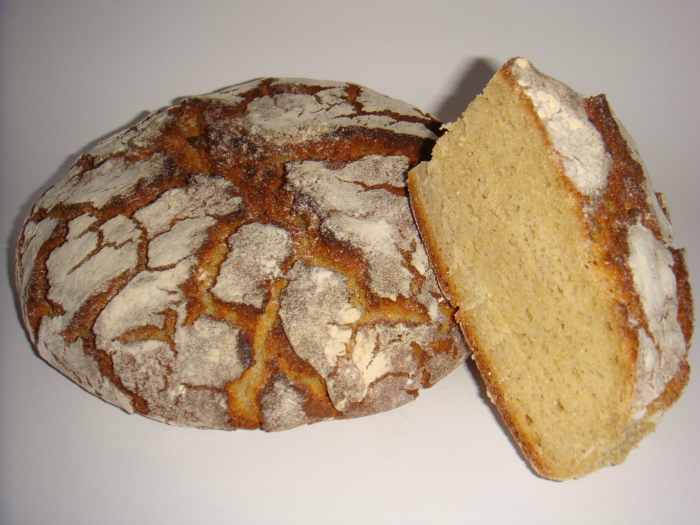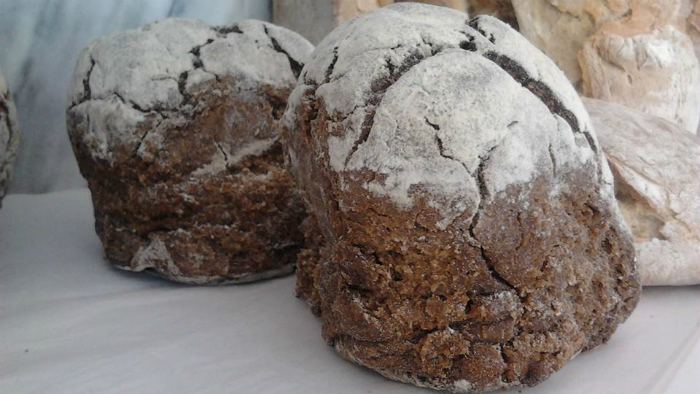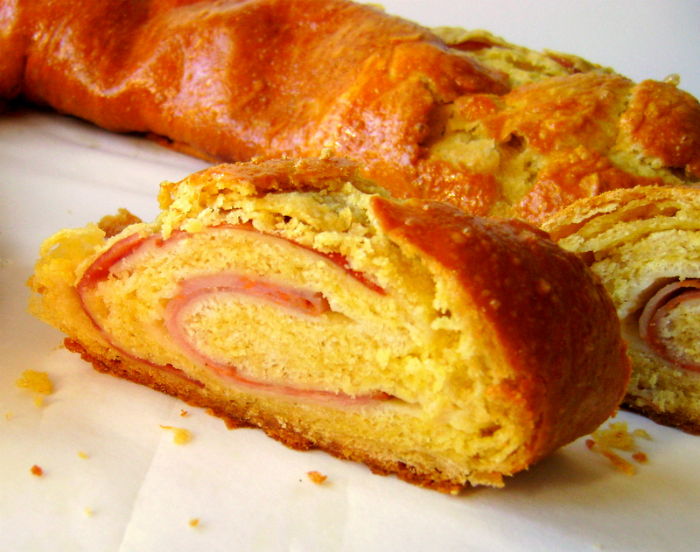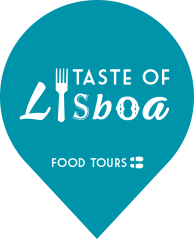The Portuguese and the bread

It’s for breakfast, for lunch, a snack, over dinner and to supper! The Portuguese have a soft spot for bread and every meal must have a good slice, either a buttered toast in the morning, to accompany a meal or even as dessert!
In Portugal, the tradition of eating bread is lost in time and is the basis of Portuguese food. Made with three main cereals – corn, rye and wheat – bread is different from region to region in form, color, taste or in crumb texture and is used in traditional dishes or even sweets.
In Portugal there are over a hundred varieties of bread. Meet some of them:
Alentejo bread
Large and compact core, this bread is often used in açorda dishes, stews and migas, as well as sweet, like French toast.

Rye bread
This type of bread is darker and the wheat flour is replaced by rye flour. It’s a bread rich in fiber.
Corn bread or “Hard” Corn Bread
Yellowish mixture of bread, whose manufacture is done with corn flour. The core is dense and soft, and very much appreciated as starter, along with a good cheese.

Mafra bread
With various shapes – round, long or in small balls – this flour and rye bread, made with high amount of water, it’s appreciated for its soft crumb and tough crust. This is a descendant of country bread, produced in the outskirts of Lisbon and dating back to the nineteenth century. At that time, when it took a day from outskirts to Lisbon, tough crust helped preserve the core.
Papo-seco or Carcaça
Small wheat flour bread and a mandatory presence for breakfast or snack, accompanied with ham and cheese sandwiches in the mixed version.
Bread of Avintes
Traditional Avintes bread, from Vila Nova de Gaia, dark brown, dense, intense, bittersweet taste, made of corn and rye flour.

Bread-and-sausage
Frequent at parties and fairs, is more appreciated just out of the oven, with its interior stuffed with chorizo slices.
Meat Bôla
Typical from Tras-os-Montes, this type of bread is stuffed with meat scraps and different types of sausages.

Bread of God
Despite the name refers to bread, it is actually a ritual done by children and whose practice is related to the ceremonial worship of the dead. Formerly it was a habit to offer bread, cake, wine and other food to the deceased. Nowadays, on November 1, All Saints’ Day, children go from door to door asking for the bread of God.
Fogaça
Traditional sweet bread of Santa Maria da Feira, in a shape that resembles the tower of a castle. It has a sweet taste with a tang of cinnamon and light and soft texture.
Bread in the portuguese gastronomy
Ensopados
tews of meat or fish where bread is one of the main ingredients. It is a traditional dish of Alentejo cuisine and there are several types of stews.
Migas or Açorda
This is a typical dish of regions such as Ribatejo or Alentejo and is often described as a plate of pastors that takes advantage of hard bread leftovers. The small pieces of bread, previously moistened in water, oil or lard with garlic create a porridge. In Alentejo the porridge is sautéed to become solid and golden, and that’s what you call Migas. The most famous Açorda is done with prawns, but if you go to a local’s house, you will discover different ways of doing this dish.

Açorda from Alentejo
This is a typical soup of Alentejo region and is different from all other soups. Why? Simply because it is not cooked! The sliced bread is placed on the bottom of the dish and washed down with water that boiled with garlic, salt, olive oil in which is added herbs as coriander or pennyroyal. It can be served with poached or boiled egg and you can even put one piece of codfish.

Sweets with bread? Only in the name
French toast
This is a mandatory dessert on Portuguese Christmas Eve. The slices of bread, after wet in milk or sugar syrup, are then passed per egg and fried. Finally they are sprinkled with cinnamon or sugar syrup.
Thin bread
This is one of the desserts included in list of traditional Portuguese sweets. Made with plenty of eggs, sugar, lemon zest, almonds and gila. This is a typical Alentejo desert and the only thing it has in common with bread is its format.
Sponge cake
Cake made with eggs, sugar and flour, there are several versions depending on the regions of the country – Alfeizerão, Ovar and Arouca. Extremely light, this cake has a thin crust wet, brownish color, which protects a yellow-creamy egg mass inside. A delicacy normally protected by white linen paper.

Continue to explore the world of Portuguese bread with these suggestions:
The Best Artisanal Bakeries In Lisbon
The 3 national meat sandwiches
Açorda de camarão: recipe for savory bread pudding with prawns
Migas: recipe for Alentejo’s fried bread side dish
Feed your curiosity on Portuguese food culture and Lisbon lifestyle:
Petiscos: the most popular Portuguese tapas
10 ways to feel like a local in Lisbon
Real people, real food. Come with us to where the locals go.
Signup for our natively curated food & cultural experiences.
